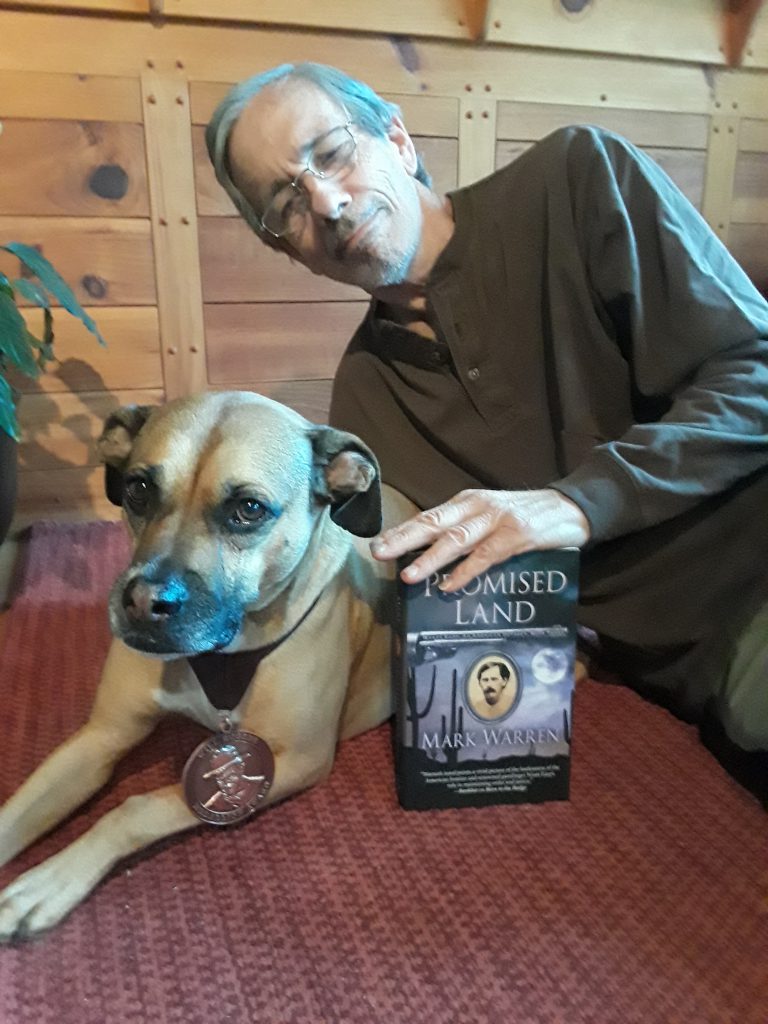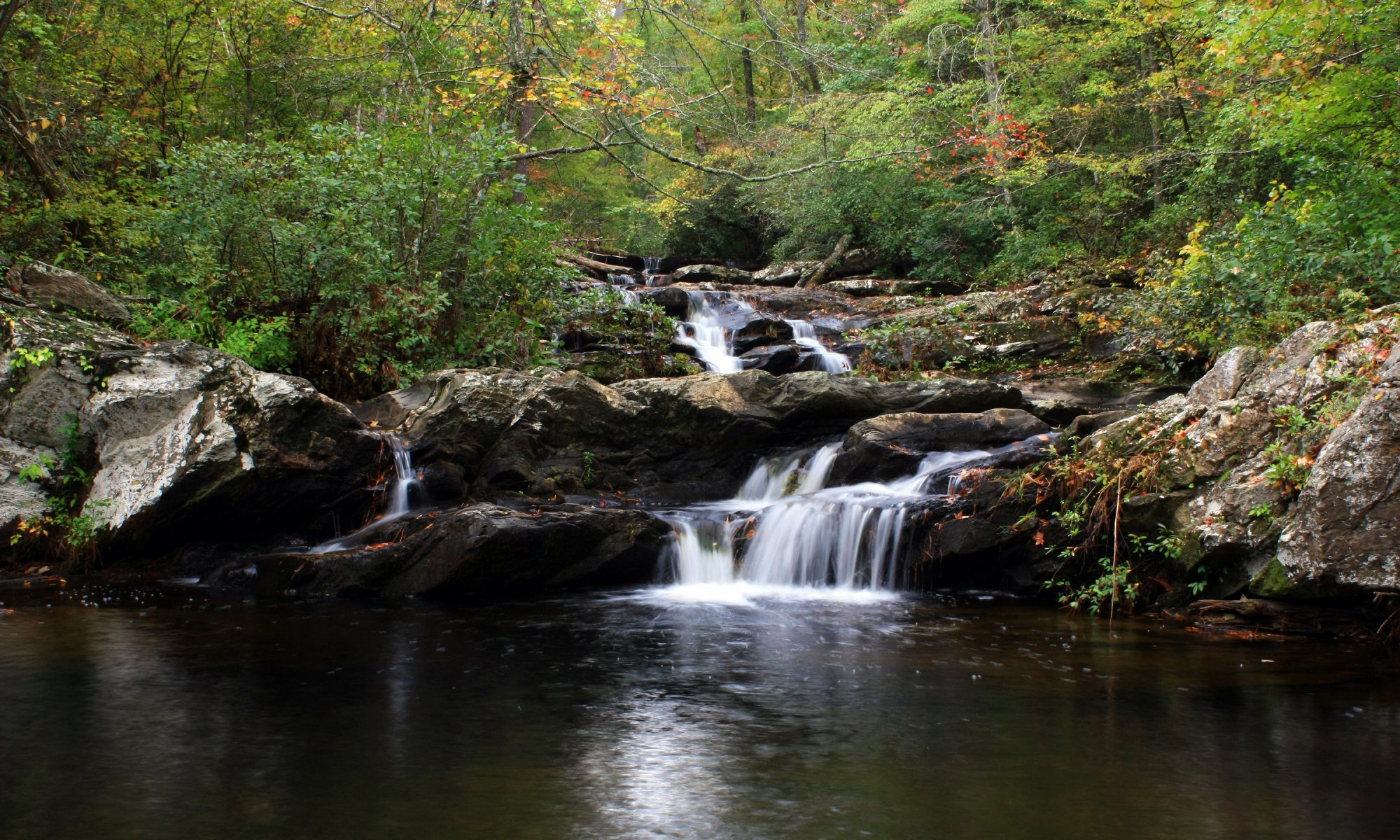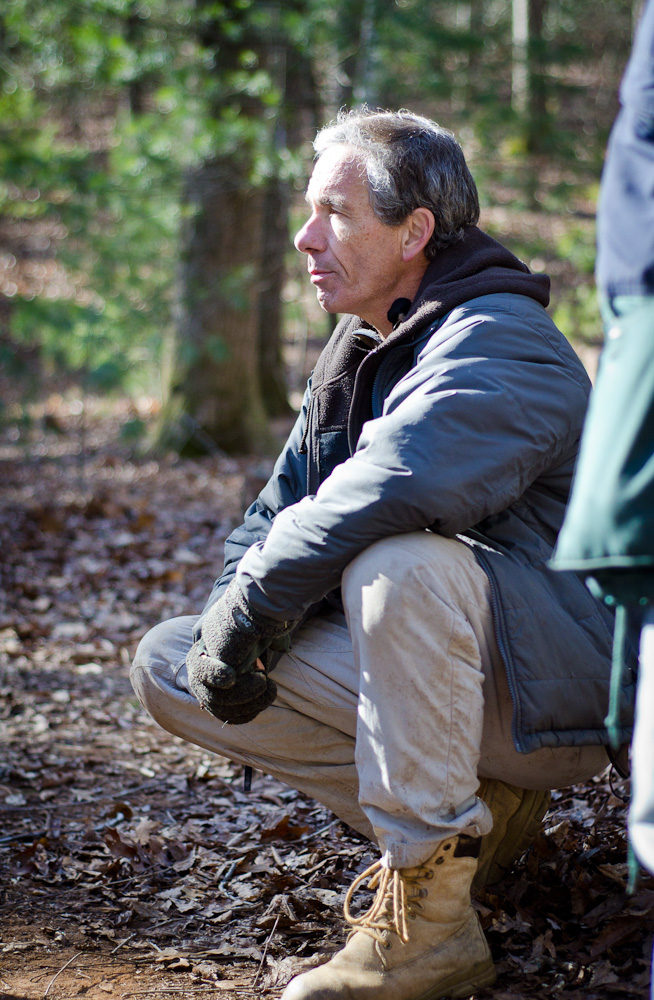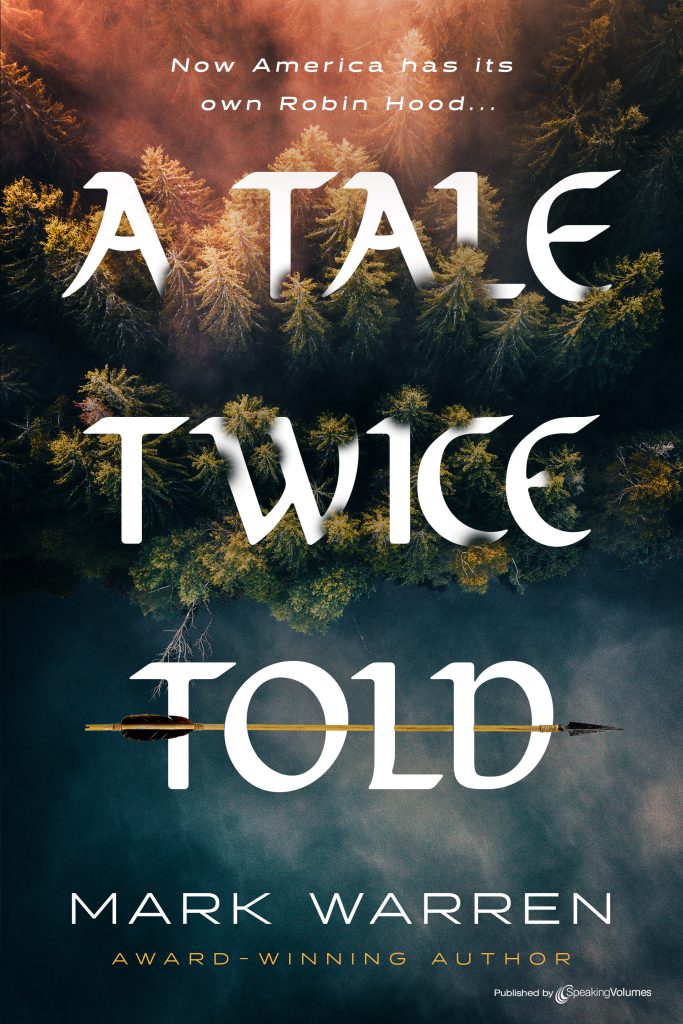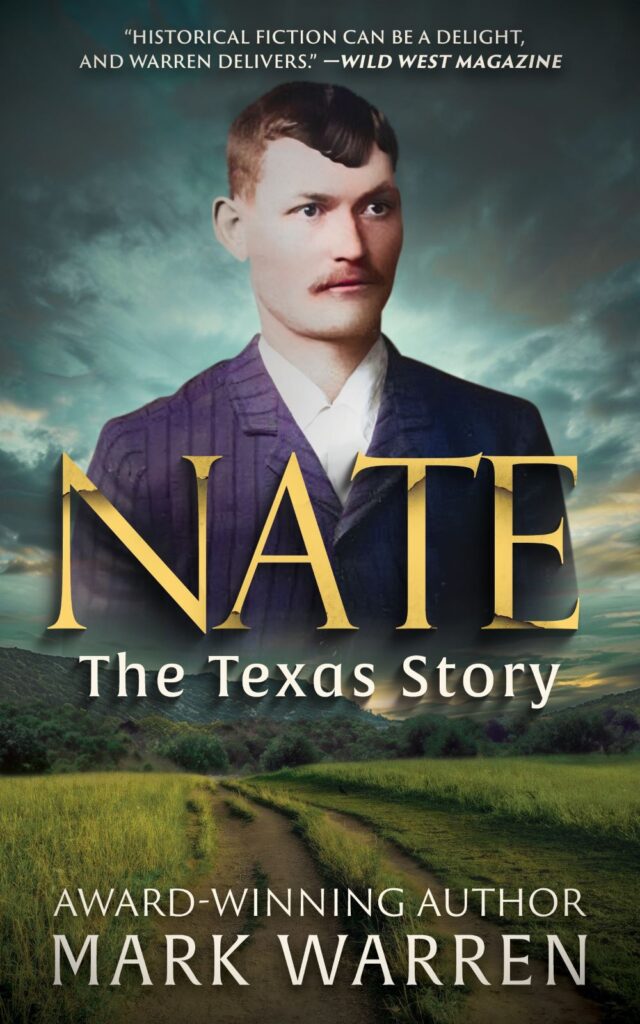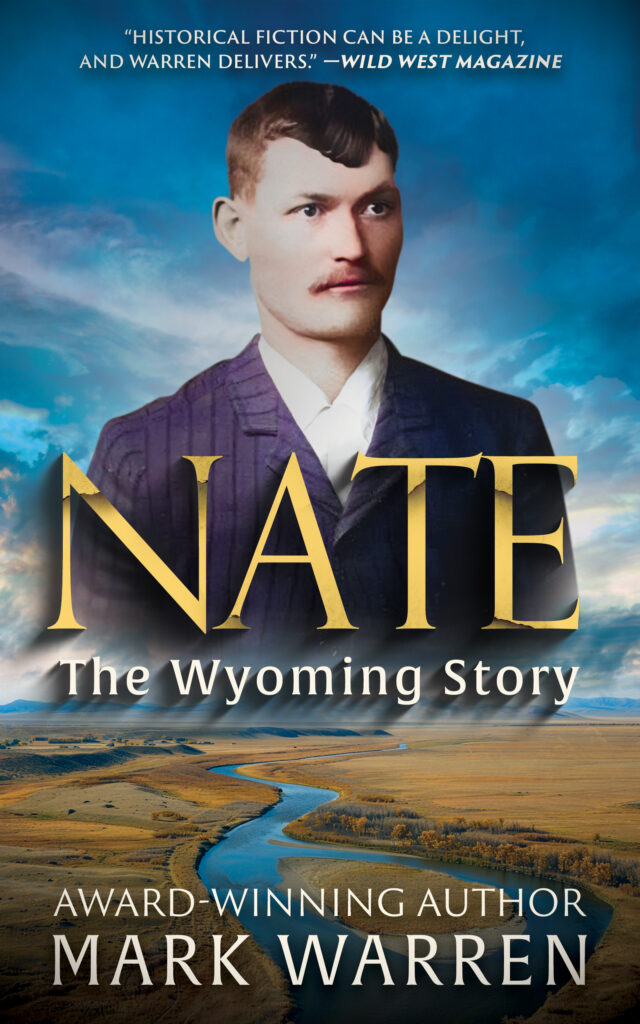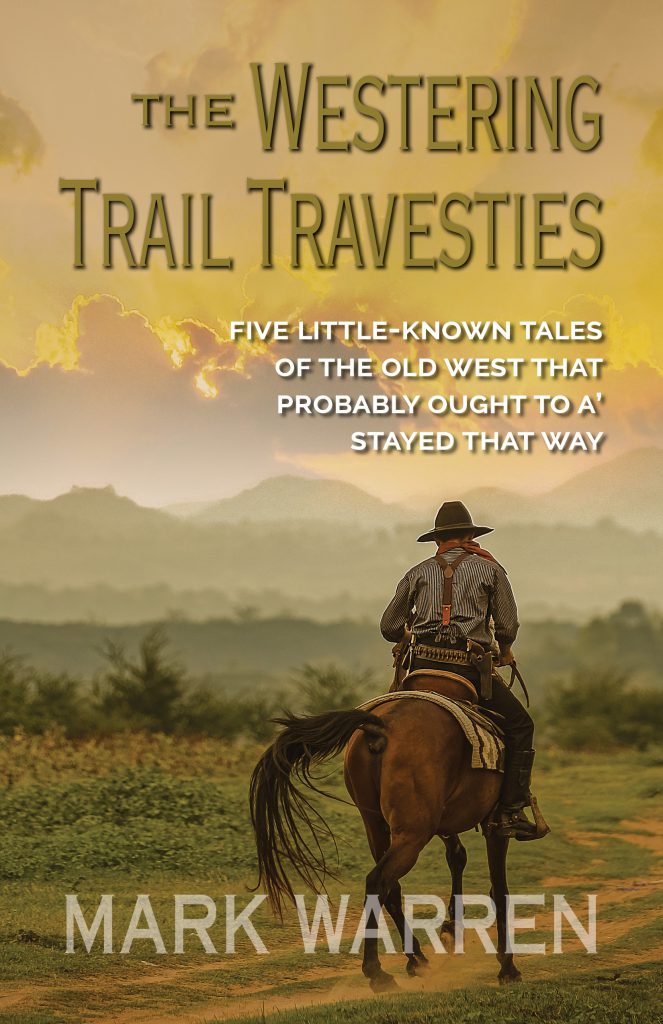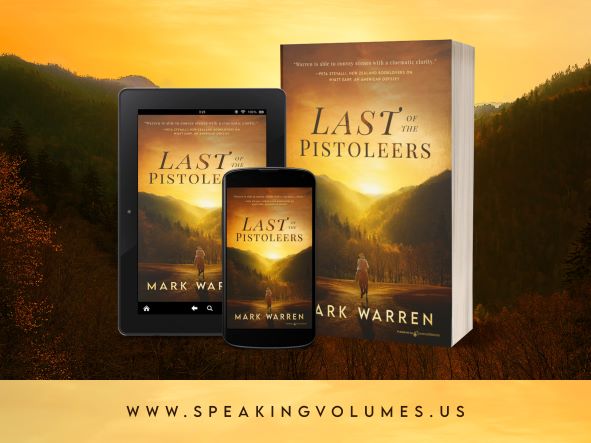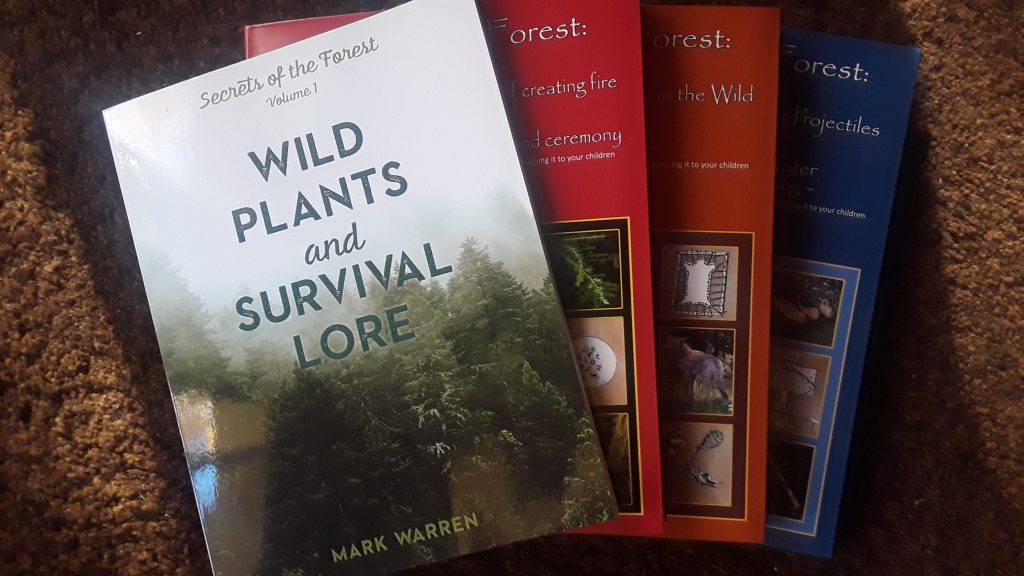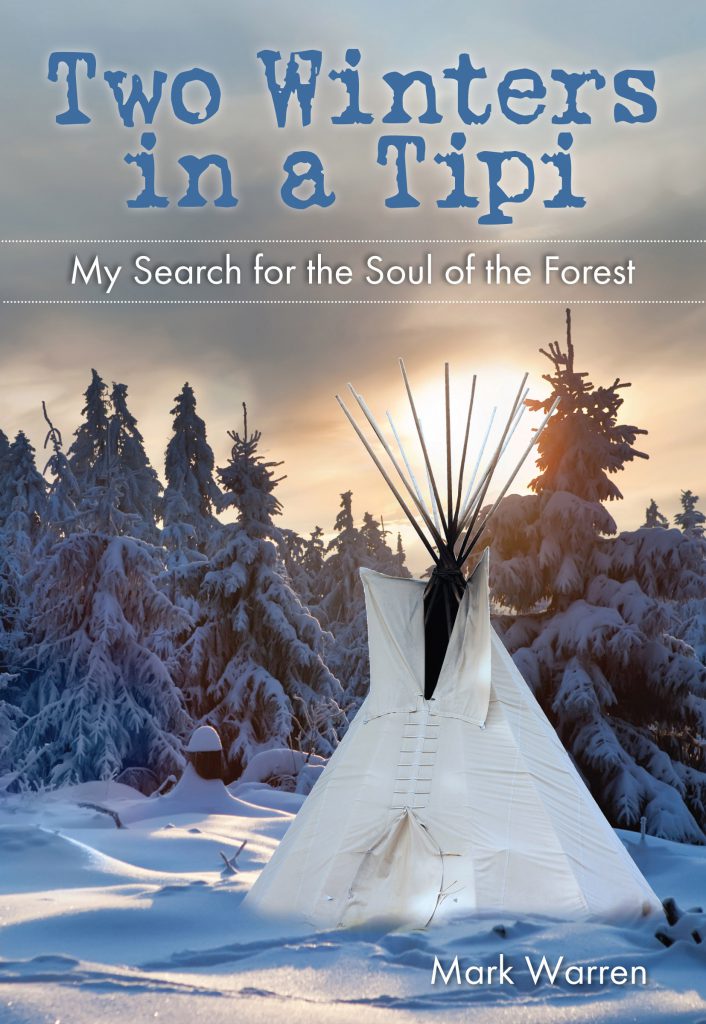Introduction:
Besides the many workshops open to the public at Medicine Bow, Mark takes his lessons into your school classroom, elementary, high school and college, or to any interested group. Programs can include both indoor and outdoor experiences.
Public workshops are held at Medicine Bow through all the seasons for students of all ages. Private workshops are also available.
Individual Class Overview (also see the “Lecture Topics” page)
TRACKING- In this class you will learn what a specific print looks like for a given animal; for example, you will know how to distinguish a gray fox from a bobcat from a red fox etc. This study will involve most of the tracks you will encounter in southern Appalachia (90%). But in the wild, tracks are often not crisp; so it is important to understand track patterns. Broadly speaking, there are about 7 ways that 4-leggeds move. In the tracking class, you’ll learn them by doing them and thereby seeing with your own eyes the resulting track patterns. Not only can this enable you to identify the trackee, but it can aid in interpreting what cause-and-effect situation your particular animal is experiencing. Each animal, you see, has a preferred gait. When that animal deviates from its norm, the story becomes more interesting. You will also actually track in a “tracking team” and learn the many nuances that the earth can reveal as an animal leaves clues on dirt, leaves, sticks, rocks, sand, plants, standing trees, and logs. (See the magazine article: “Footprints Across the Landscape” in the Media section.)
MEDICINE- The medicinal plants that you will learn can be used to resolve such ailments as: stomachache, fever, poison ivy rash, migraine headache, skin rash, wasp sting, external bleeding, pain, topical infection, serious burns, indigestion, constipation, diarrhea, sinusitis, bronchitis, and bothersome insects.
WILD FOODS- Since the beginning of animal life, the earth has provided food. But we humans have moved to an illusory dimension, seeing foods “originate” in stores. And so we have lost an instinct that anthropologists believe once guided humans to foods effortlessly (just like wild animals today). Without that instinct we are quite vulnerable in a scenario of random foraging. Many plants have developed serious poisons over time as a way of protecting themselves. Neither can a survivalist expect to be guided benevolently to edible plants by watching the eating habits of wild animals. This does not work. So there is no alternative today but to study academically. This class accelerates your life study of wild foods by having positive identifications in the wild with a teacher. (See the magazine article: Eighteen Plants, Eighteen Allies.”)
“SURVIVAL SKILLS” – What was once common knowledge to all native people is now a seemingly esoteric knowledge to most, because modern man and woman appear not to need the raw strength, the skills, and an intimate knowledge of nature. It is true that most will probably never be thrust into an emergency survival situation in this time as we know it. Or is that true? Could our structure of subsistence collapse? If so, we may have no recourse but to return to the most basic of skills. That alone is a practical rationale for survival skills. (Imagine that beginning tomorrow, for the remainder of your life, you would have not a single store at which to shop. Every need must come from nature. This was the way life once was.) But even if that tragic and traumatic event should not crash upon your life, there are two poignant reasons to learn these skills. 1. Self-reliance (and self-esteem) soars. 2. Your relationship with the natural world matures, fulfilling a critical piece of your physical and spiritual life. In this course, you will learn about shelter, fire, food, cooking, hunting, snares & traps, water purification, tools, and plant medicines.
I no longer teach multiple-day classes that included overnight camping. In those former classes, I covered all the aspects of “survival skills.” Now, I teach one subject at a time for a one-day class.
BASKETS – (Private classes only) Berry baskets of spring tulip tree bark (makes a good arrow quiver too) and acorn-leaching baskets of grape vine.
ARROWS – (Private classes only) Shafts of river cane heat-straightened and fletched with wild feathers. Hardwood fore-shaft and nock inserts. Points of stone, antler, bone, or shell.
BOWLS – (Private only) Wooden bowl burned out by fire using a hot coal and blow tube of plant stem.
STALKING –This demanding art is beneficial to body and mind in much the way Tai Chi is. But this skill brings you close to wild animals, whether you are observer, photographer, or hunter. The lessons of stalking have been long demonstrated by animals. You will learn to emulate the fluidity of fox, the quiet foot placement of deer, and the patience of heron. Most of the animals people wish to see (both predator and prey) have lost their capacity for color vision (except for birds) in order to isolate their vision on movement. Stalking teaches you the trick of invisible movement. The rewards will be stories of animal encounters you will tell and remember for all your life.
SHELTER – (Private only) Construct a cold-proof and rain-proof abode for winter survival.
FIRE– The magic of fire-by-friction is unique. A kind of humble power comes with the accomplishment of this skill. It is quite a feeling to stand before a dead tree of your careful choosing and know that the two of you are about to conspire in the creation of fire. Some survival schools put a low priority on fire as an essential component of staying alive. At Medicine Bow, I afford it a high rank for two reasons. In late summer and early fall when chiggers are still active but nights are cool, it is pure misery to subject yourself to a debris hut for sleeping. An excessive number of chigger bites can demoralize. Also, fire gives a positive psychological comfort to the camper. This cannot be over-rated. Methods taught include the hand drill and the bow drill.
PYRE BUILDING – Everything you need to know about constructing the wooden architecture of your fire-to-be. You will learn about the types of trees that can be used to make fire and those that cannot. And you will learn which types of wood are best for the burning as your fire reaches its different phases.
HISTORY- I take many programs into schools, scouts, or other groups. The most asked-for program has been THE HISTORY OF NATIVE AMERICANS IN SOUTHERN APPALACHIA in which I demonstrate many handmade crafts and skills of the old ways. The story begins with the first human foot set upon North America and from there branches out into the 500 resulting tribes. What created these discrete tribes? The land itself. Each mini-environment placed its influences upon the new native settlers. The program delves into culture, living skills, and tribal philosophy, which offers the opportunity to compare ancient values to our contemporary attitudes toward our environment. This 1 ½ hour seminar can be followed by an outside tour of THE SECRETS OF THE FIRST FOREST DWELLERS, a hands-on exploration that brings the magic of history into the familiar components of your backyard. In walking your land during this part of the program, you encounter the same resources that shaped the lives of people who first lived on “your land”.
BOTANY– This is the heart and soul of Medicine Bow, because all the skills taught start with a knowledge of plants. A comprehensive study of plant anatomy (in which you begin composing your personal life-study book of botany) prepares the student for extensive field study. This program is tailored for all ages. From this first class a student is prepared to continue his/her life study of plants and their uses as food, medicine, and craft material. By walking in the field with a teacher who can eliminate the guesswork of plant identification, your competency in plant study accelerates so much beyond solo study. But eventually it is your solo study that instills in you the sense of really knowing your environment.
ECOLOGY – Ecology is not, as many believe, a way to treat the Earth, but a science (a process) that has been in place since the beginning of time. It is a study of inter-relationships between the Earth’s puzzle pieces. Ecology is the science that taught humans by example to embrace conservation, recycling, etc. This is a good indoor program to be followed by outdoor time. Before conservation can be truly embraced by a student, an understanding of ecology is a must – as is the human place in that intricate puzzle.
WILDLIFE – Medicine Bow has no captive animals, because it is a wildlife sanctuary. But it affords wonderful opportunities for animal study (see tracking, stalking). Birds are plentiful for a program based on our winged friends. Some of the other animal residents include: white-tailed deer, raccoon, bobcat, red and gray fox, coyote, squirrel, black bear, white-footed mouse, cottontail rabbit, cougar, armadillo, dozens of species of snakes, etc.
DESIGN IN NATURE- This program is well-suited for indoors or out and provides a lot of excitement for those who like riddles. Everything that exists in nature is displaying its “temporary end result” of centuries of evolutionary experiment. Because a design exists today, it boasts a certain success in its architecture and function. So from my box of natural goods we try to reconstruct that animal’s or plant’s need for that design. The other aspect of this study that is fun to consider is this: everything that humans “invent” can usually be found first in nature. Two examples for you: 1) the zipper comes from a feather. Look at the soft filaments of a feather under a magnifier as you separate two adjoining sections. And you can hear it unzip. 2) Tick trefoil is a plant you might not know unless in fruit. You’ll recognize its little green, triangular seeds that stick to your pants and socks. As you pull them off you are removing the “hooked” side of Velcro from the “loop” side (your clothes).
INDIAN SIGN LANGUAGE- The tribes of the Great Plains developed a way to communicate with the hands because they were migratory (following bison) and in their travels always coming into contact with tribes who spoke a different tongue. This quiet language then became helpful in times of stealth, such as warring raids and hunting. The language is beautiful and easy to learn with a teacher who can explain to you why a certain sign took on its meaning. Like making fire, it contains a kind of power that you will feel expand your sense of self. It’s also a lot of fun.
THE OLD WEST PEACE OFFICER – After 60 years of study, seminars, private meetings with top historians in the field, and my travels to the historic places in the West, I can offer a fresh perspective of history versus American mythology. The American frontier was unique to the history of the world and offered an interesting stage for those who would take part. Of course great tragedies underlie this westward expansion: the demise of the bison, the deadly trespass against the Indians, the disregard for the land as resources were chiseled and hacked from the earth. But an unparalleled adventure was ripe for the person willing to follow the frontier. I find none more compelling than he who pinned on a badge to bring order out of chaos. For some it was more than just a job. My specialty is the life and times of Wyatt Earp.
CONSERVATION- I harbor the opinion that conservation cannot be taught. It must be logically appreciated by first exposing people to the treasures of nature. But this class certainly has its place, because today people are so removed from their true sources (in nature) that they might never conceive of the ways they can practice conservation once the obligation blossoms inside them. This class is recommended for school students and adults who are ready to assume some degree of stewardship toward the Earth. The course addresses energy consumption, water quality, solid waste, recycling, animal rights, lifestyles, consumerism, philosophies, air quality, food, … in ways that apply to our daily lives. The program ends with the challenge of a commitment by each student.
LEGENDS – Storytelling once used as its canvas the curl of flames against the black of night to free the imagination of the listener. The lessons, allegories, and warnings hidden in these stories were an integral part of a person’s education.
ARCHERY- I have pursued many techniques of shooting and believe I have gravitated to a very fine method of teaching; in fact, I consider Medicine Bow’s class the best course of its kind. It is for beginner, intermediate, and near-expert. Archery is an art to me. In this course you will learn direct shots (the hunter’s shot), clout shots (once used in castle siege, lots of fun and beautiful to watch), and lob shots (once used for signaling and supplying ammo). You will learn to shoot at stationary and moving targets, two very different techniques. All gear is provided, but if you have your own you should bring it for appraisal. Besides this class, Medicine Bow offers a monthly adventure for archers who would like to try to win the Silver Arrow at an Archery Rendezvous. All ages 8 and up and all skill levels are welcome as we use a handicap system.
TEACHER WORKSHOPS – I will travel to your school to help your teachers discover ways to incorporate environmental education into their curricula with a minimum of effort. Part of this is learning to make the most of your school grounds. It is true that not every teacher is adept at presenting value choices in environmental education. But at the very least, every teacher should be visibly engaged in some aspect of environmental conscientiousness; because the teachers are role models who have a golden opportunity to help reverse the momentum of a culture disengaging itself from a reverence toward nature. No matter how removed a person may “seem” to be from the natural world, we all still depend on it as critically as did the people who had to live closer to the land on a day-to-day basis.
How to sign up for a class: See Class Schedule Page for dates and pricing.
Each class is filled to its limit (usually 13) by a first-come-first-served receipt of check made payable to Medicine Bow, Ltd. You can reserve a spot by email or phone and that spot will be saved for one week, giving the applicant time to mail in a check. A letter of information and directions is then emailed to the applicant. A check received after a class fills is, of course, returned in full. A cancellation 7 full days before the class is also returned in full. For a cancellation made 4 full days before class, 50% is returned or 60% is applied to a future workshop.
Public classes usually run from 9:30 a.m. to 4 p.m. at Medicine Bow, where lasting friendships are made. A student brings knife, notebook, rain gear, sack lunch, and water bottle. For archery and knife/hawk students, equipment is provided.
If you would like to connect with Mark about Medicine Bow, please email him at medicinebow(at)att.net



